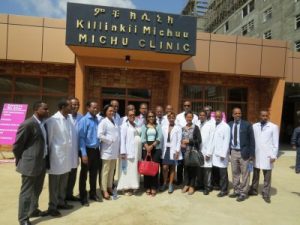Determinants of Uterine Rupture among Cases of Adama Town Public and Private Hospitals, Ethiopia

DOI: 10.1002/ijgo.12582 FCS187
Dr.Fikru Abebe
Adama Hospital Medical College, Adama, Ethiopia
Objectives: Ethiopia is among the ten countries with highest maternal death rate, accounting for more than 59% of global maternal deaths. Uterine rupture is the dangerous obstetric problems with high potential of causing maternal and neonatal morbidity and mortality. The case fatality rate for uterine rupture is high and identifying factors associated with rupture remains important to guide decision makers and practitioners in intervention processes. The study aimed to assess factors associated with uterine rupture among cases managed at Adama town public and private hospitals during January 2011 to December, 2015.
Method: Unmatched case control study was employed. Sample size was determined using computer software and a total of 432 women, that is 144 cases and 288 controls were included in the study. Data were entered in to EPI-Info-7 and exported to Stata-12 for analysis. The study participants were characterized using descriptive statistics. The associations between uterine rupture and independent variables were modeled using logistic regression. The significance of associations was tested using chi-square at p-value <0.05. The risks of uterine rupture were estimated using odds ratio within 95% confidence intervals.
Results: There was a declining trend in the annual number of cases of rupture over the past five years during the study period, from 49 cases in 2011 to 22 in 2015. The chance of having uterine rupture was found to be associated with being from a rural residence (AOR=6.29; 95% CI 3.39, 11.66), gravidity of five or more (AOR=27.89; 95% CI 8.42, 92.34), having history of CS scar (AOR=9.94; 95% CI 3.39, 11.66) and having history of no ANC visit (AOR=9.64; 95% CI 4.37, 21.29).
Conclusions: In general there is a declining trend in the number of cases of uterine rupture over the past five years from 2011 to 2015. Uterine rupture was highly likely among women from rural residence, with high number of gravidity, history of CS scar and not using ANC.







